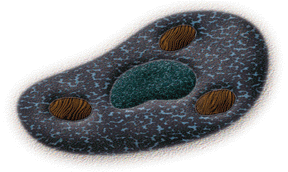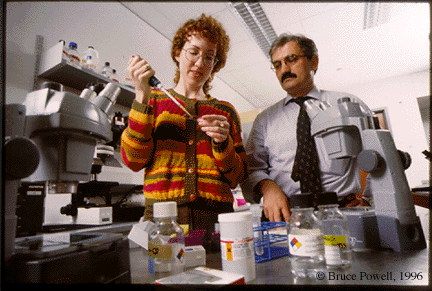

Continued
 The University of Chicago Magazine June 1996
The University of Chicago Magazine June 1996

Continued

Full of vitality and with their whole lives ahead of them, students in the College are often asked to contemplate death in the course of their studies. They may consider the trial of Socrates in Plato's Apology, or the suicide of Madame Bovary. They may reflect on psychosocial aspects of death discussed in the writings of Elisabeth Kübler-Ross, CLA'70, or in Jessica Mitford's The American Way of Death.
In the Biological Sciences Collegiate Division, students can have a more direct experience as they watch cells undergo apoptosis, or programmed cell death, in response to a biochemical suicide signal. Students observe the suicide phenomenon-which has only recently emerged as a crucial area of interest in the research lab-in BioSci 209, an upper-level immunobiology course for biology majors. Obtained from the immune system of a mouse, the cells used in the teaching lab naturally kill themselves off if they are likely to react against the mouse's own healthy tissue.
"It looks like the cell surface is bubbling as these vesicles come off," says Aaron Schwartz, a fourth-year biology major. He's describing the appearance of apoptosing cells as viewed by differential-interference contrast microscopy, a technique that shows their surfaces in sharp relief. "A lot of the time in the laboratory, you're just going on faith for what's happening, based on a tube changing color, or whatever," says Schwartz, who will begin graduate studies at MIT this fall. "This is concrete visualization-it's going on right in front of you."
Schwartz and his classmates use several other advanced methods to witness apoptosis. Fluorescence microscopy lights up a cell's nucleus in a pale, neon-blue glow against a black background, so that the fragmenting nucleus of the apoptosing cell is clearly distinguishable from the intact nucleus of a healthy cell. Students also use molecular techniques to isolate DNA from the nucleus of apoptosing cells, then to sort the DNA pieces by size along a gel, using electrophoresis. The resulting array of different lengths shows that the chromosomes get chewed up by the cell as it commits suicide.
"This is a cutting-edge research technology being used in the undergraduate teaching lab," says immunologist Jose Quintans, the course instructor. Quintans, master of the Biological Sciences Collegiate Division, believes the undergraduate lab in apoptosis is unique. Lab director Mary Crane agrees, citing a national immunology teaching seminar she attended last summer.
"I had many requests for this lab protocol," Crane says. "Nobody had heard of it before in a teaching-lab setting."-W.B.
Return to opening of "Death by design"
Go to:
Return to June 1996 Table of Contents